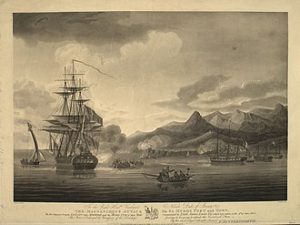Ignatius Seale

Valued, skilled blacksmith enslaved escaped to freedom in Canada
Ignatius Seale was 19 when he escaped to the British Forces during the War of 1812. Ignatius was one of the 49 enslaved by John Rousby Plater at Sotterley Plantation in St. Mary’s County who fled to a British ship anchored in the Patuxent in the summer of 1814. Throughout the war, the British offered freedom to any enslaved individual who made it to British lines. This offer of freedom was the an outcome of British Vice Admiral Cochrane’s Proclamation.
In John Rousby Plater’s reparations claim following the war, Ignatius Seale was listed as 19 years of age and “valued” at $500. Ignatius was one of only six in the total list of the 49 escaped enslaved from the Soterley Plantation who was also listed with skill. Next to the monetary claim by Plater, Ignatius was listed as “a black smith.”
Ignatius Seale was one of the first four enslaved men who fled to the British ship the H.M.S. Lorie in July 1814. This group of four, risking their own lives and freedom, then helped others at Sotterley and the surrounding area escape to freedom. The ship logs for the H.M.S. Loire report on June 20, 1814 the ship “received several Black men and women” and then “sent the Black people to the Admiral.” They were listed as Ignatius Seale, age 19, Peregrine Young, age 20, James Bowie, age 20, and Joseph Wood, age 22.
The first departure of slaves from Sotterley coincides with the First Battle of St. Leonard’s Creek, which resulted in the British blockading Commodore Joshua Barney’s Flotilla in St. Leonard’s Creek. With Barney’s Flotilla trapped in St. Leonard’s Creek, the British fleet could freely pillage the various plantations along the Patuxent River. Sotterley’s position straight across the Patuxent River from the mouth of St. Leonard’s Creek put the plantation at the center of combat. The slaves at Sotterley would have witnessed the combat up close.
Most freed individuals who did not enlist in the war effort were taken to Halifax, Nova Scotia by the British. The Seale family settled in the Northwest Arm of Halifax, alongside the Munroe and Coursey families who had also escaped from Sotterley. Records show that by 1815, the freed groups in Nova Scotia either lived in crowded and inadequate barracks or were granted small parcels of land.
Additional Resources
Maryland State Archives, Sotterley Plantation (Images of America) by Jeanne K. Pirtle.
Historic Sotterley, www.sotterley.org
Archives of Maryland, Peregrine Young, MSA SC 5496-51075 (maryland.gov)
The Slaves’ Gamble: Choosing Sides in the War of 1812: Smith, Gene Allen, St. Martin’s Press, 2013. Book.